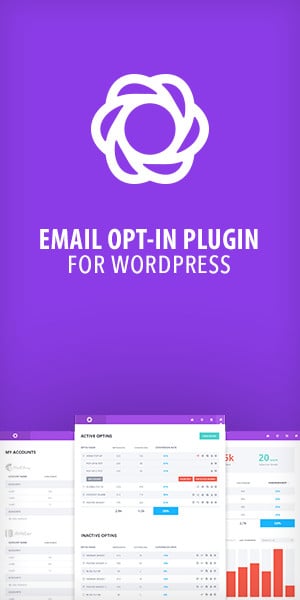Best tools for automating project management are revolutionizing how teams manage tasks, streamline workflows, and boost productivity. With research showing that automation can reduce project completion time by up to 50%, investing in these tools is more crucial than ever. This post will cover top tools, their key features, and how they can enhance efficiency in your project management processes. By integrating automation, you’ll not only save time but also minimize human errors, fostering a more organized and proactive work environment. Dive in to discover how these tools can transform your project management experience.
Introduction to Automating Project Management
Project management is a cornerstone of effective business operations. With the introduction of automation, this field is experiencing a transformative shift. Automation brings efficiency, reduces errors, and enhances team collaboration. This section delves into the significance of automation and examines the hurdles faced in traditional project management.
Understanding the Importance of Automation in Project Management
Automation plays a crucial role in modern project management. It minimizes manual tasks, allowing teams to focus on strategic planning. Automated systems streamline processes, ensuring deadlines are met and goals achieved. By reducing human error, automation enhances project accuracy and reliability. The speed and consistency it provides lead to improved productivity and business growth.
Common Challenges in Manual Project Management Processes
Traditional project management is fraught with challenges. Manual processes often lead to communication breakdowns, missed deadlines, and inefficient resource use. Teams spend excessive time on repetitive tasks, leaving little room for innovation. Poor data management results in scattered information and unreliable reporting. These issues highlight the need for automated solutions.
Overview of Essential Automation Features
Key features of automation in project management include task scheduling, real-time collaboration tools, and automated reporting. Scheduling tools ensure tasks are assigned and tracked efficiently. Real-time collaboration enhances team communication and project visibility. Automated reporting provides accurate insights into project progress, aiding decision-making.
Top Tools for Automating Project Management Tasks
To maximize the benefits of automation, selecting the right project management tools is essential. Various tools offer unique features that cater to different needs. This section explores top tools that bring efficiency, flexibility, and integration capabilities to project management.
Tool 1: Features and Benefits
The first tool excels in task management and resource allocation. It offers intuitive dashboards for real-time project tracking. Collaboration features allow seamless communication among team members. Enhanced security measures protect sensitive project data. This tool’s analytics help identify potential bottlenecks and optimize workflows.
Tool 2: Customization and Flexibility
Customization is the highlight of this tool. It adapts to diverse project requirements, offering adjustable templates and workflows. Users can tailor task lists, timelines, and notifications. The tool supports various project methodologies, such as Agile and Waterfall, providing flexibility to suit any team’s needs.
Tool 3: Integration Capabilities with Existing Systems
This tool’s strength lies in its integration capabilities. It seamlessly connects with existing systems like CRM, ERP, and more. Integration ensures data consistency across platforms, reducing duplication. It also enhances collaboration by unifying communication tools in one platform. This results in streamlined operations and improved productivity.
Evaluating and Implementing Project Management Automation
Implementing automation requires careful evaluation and planning. It’s not just about picking a tool; it’s about finding the right fit for your team’s processes. This section guides you through the factors to consider, best practices for implementation, and how to measure success.
Factors to Consider When Choosing Automation Tools
When selecting tools, consider your team’s specific needs. Evaluate features such as scalability, user-friendliness, and compatibility with existing systems. Cost is a crucial factor, along with the level of customer support offered. Analyze vendor reliability through reviews and case studies to ensure a wise investment.
Best Practices for Implementing Automated Solutions
Successful implementation requires a strategic approach. Start with a clear plan, outlining goals and timelines. Engage stakeholders and provide training to ensure smooth adoption. Monitor progress closely and be prepared to adjust strategies. Continuous feedback ensures the system evolves with your project needs.
Measuring the Success of Automation in Project Management
Quantifying success involves evaluating key performance indicators (KPIs). Monitor metrics such as task completion rates, team productivity, and cost savings. Use feedback surveys to gauge team satisfaction and identify areas for improvement. Regularly review results to ensure the automation continues to meet project goals.
Conclusion
The article discusses the need to automate project management processes and highlights associated benefits. It outlines challenges in manual project management and the essential features of automation tools. Three recommended automation tools are described, focusing on comprehensive features, customization, and integration capabilities. Key factors for selecting the right tools and best practices for successful implementation are discussed. Guidance on measuring the effectiveness of automation in project management is also provided.
FAQ
What are the top tools for project management automation and their key features?
Leading tools like Asana, Trello, and Monday.com dominate the market. Asana offers task customization, workflow automation, and timeline views. Trello excels with its simple drag-and-drop interface and powerful integrations. Monday.com stands out with visual dashboards and comprehensive collaboration features. Each tool enhances productivity through automation and intuitive design.
How can automation tools improve efficiency in project management tasks?
Automation tools streamline repetitive tasks, reducing manual input. They facilitate real-time updates, ensuring team alignment. Task assignments, deadline reminders, and reporting can be automated, saving time and minimizing errors. By automating these processes, teams can focus on strategic tasks and improve overall project outcomes.
Which project management software offers the best integration with other platforms?
Software like Asana, Jira, and Monday.com offers seamless integration with popular platforms. Asana integrates with Slack, Google Workspace, and Microsoft Teams. Jira supports tools like Confluence and Bitbucket. Monday.com connects with various CRM and productivity apps, enabling smooth workflows and efficient data sharing.
What are the benefits of using cloud-based project management tools for automation?
Cloud-based tools provide accessibility from anywhere, ensuring teams can collaborate effectively. They offer automatic updates and backups, enhancing data security. With cloud solutions, scaling up or down is easier, accommodating growing project needs. They also support real-time collaboration, promoting team efficiency and adaptability.
How do automated project management tools help in resource allocation and tracking?
These tools provide insights into resource availability and utilization. Automated scheduling allocates tasks based on team member capacity, optimizing resource usage. Tracking features monitor progress and identify potential bottlenecks, allowing for timely adjustments. This ensures efficient resource management and project success.
What factors should be considered when choosing a project management automation tool?
Consider user-friendliness, integration capabilities, and scalability. Ensure the tool aligns with your team’s workflow and supports essential features like task automation and reporting. Evaluate customer support and pricing to fit your budget and needs. The right tool enhances productivity and adapts to evolving project demands.




